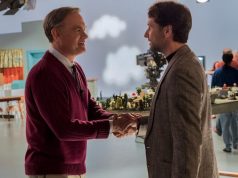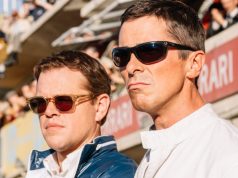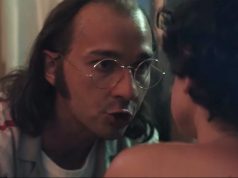Valentino Garavani, the Italian-born, Paris-trained designer of haute couture, is on a first-name basis with the entire fashion world, but what do we know of his personal life? “Valentino: The Last Emperor,” a frothily entertaining but insignificant documentary by first-time filmmaker (and Vanity Fair writer) Matt Tyrnauer, purports to show us the real Valentino, but all we end up learning is how his business operates. That’s reasonably interesting as far as it goes, but Tyrnauer was obviously trying to go further.
The film crew was given unprecedented access to the behind-the-scenes workings of Valentino headquarters in Rome during the run-up to his 45th anniversary show in 2007. The aged, over-tanned fashion maven oversees a staff of busy seamstresses who do all the actual putting-together of his designs; they are led, in turn, by Antonietta, a stylish middle-aged woman of fiery temperament who does not let the fact that she is holding scissors in both hands prevent her from gesticulating wildly as she berates underlings. Valentino is supported creatively and personally by Giancarlo Giammetti, his friend and business partner of almost 50 years (but more about him later), and is accompanied everywhere he goes by a cadre of identical pug dogs. He lives in a fabulous villa where staffers are seen painting brown parts of the lawn green before a party.
We get a sense of Valentino’s personality, which is more or less what you’d expect. He’s sometimes mildly petulant with his staff, just short of abusive. He takes a practical attitude toward his work (“I make dresses for women who actually wear them,” he says at one point, concerned that a design might be too see-through) and sums up his philosophy very simply: “I know what women want. They want to be beautiful.” Giancarlo, who’s an honorary chairman of the Valentino company, says, “To be with Valentino as a friend, a lover, an employee, it’s all the same. There is a lot of passion.”
That mention of the word “lover” is the film’s only explicit indication that Valentino and Giancarlo are more than friends. Their sweetly cantankerous relationship is the film’s most fascinating asset — too bad, then, that Tyrnauer never really examines it. Details about how they met, way back in 1960, make for an adorable love story, as does Giancarlo’s answer when asked to describe what it’s like to live his life in one man’s shadow: “Happiness.” He seems blissful in his relationship with the designer.
Yet even a cursory glance at other biographical sketches shows that Tyrnauer has skimmed over some significant details — like the fact that Valentino has had the same American boyfriend, Bruce Hoeksema, since 1982. Where is he? How does Giancarlo fit into the equation? Watching the film, you’d assume Valentino and Giancarlo are a long-term committed couple. Nobody ever says it, but the film certainly seems intent on giving the impression.
A movie about a fashion designer doesn’t have to get into his personal life, of course — unless it says that’s what it’s doing, in which case it needs to do it, and do it right. Is this a personal profile of Valentino, or isn’t it?
With documentaries on subjects I have no interest in (for example, high fashion), I often apply this test: Was the movie entertaining or intriguing anyway? That’s how you separate the preaching-to-the-choir documentaries from the ones that transcend their subject matter. “Valentino: The Last Emperor” falls somewhere in between. It has little to say about humanity in general, or even Valentino specifically, but it is fun and glitzy. Just don’t expect anything revelatory.
B- (1 hr., 36 min.; mostly in Italian with subtitles; )





